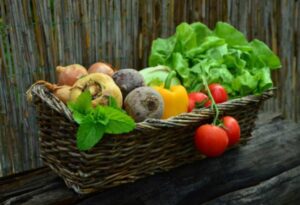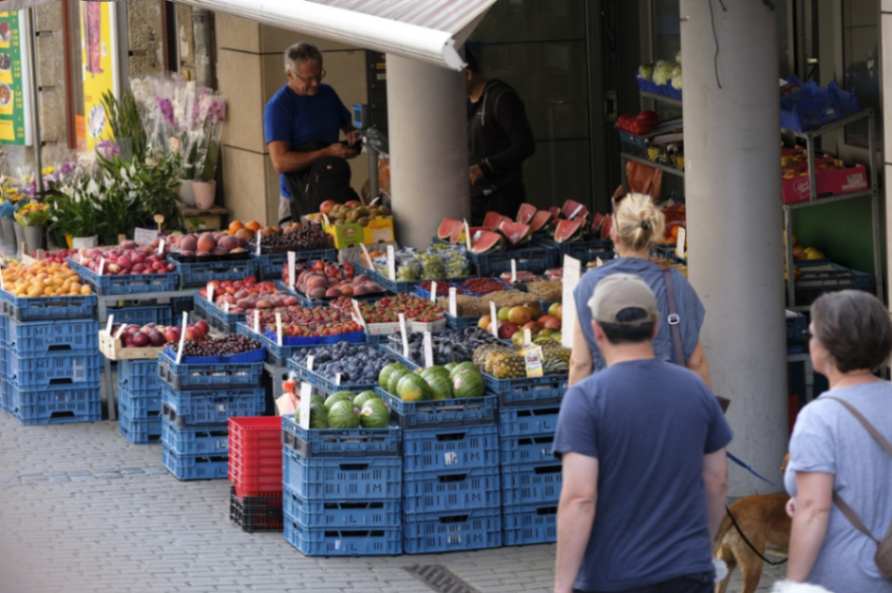Hungarian cuisine vividly reflects the country’s rich history and diverse cultural influences. Shaped by the rhythm of the seasons and the unique characteristics of its regions, traditional Hungarian dishes offer an ever-changing and flavorful culinary experience.
The Influence of Seasons on Hungarian Cuisine
As with many culinary traditions, the changing seasons play a crucial role in Hungarian cooking. Throughout the year, the availability of fresh, local ingredients dictates the types of dishes prepared, resulting in meals that are naturally aligned with the ebb and flow of the seasons.
Spring: Spring is a season of renewal, and Hungarian kitchens are filled with lighter dishes that showcase the fresh vegetables and herbs of the season. Spinach, radishes, and asparagus are common ingredients, and spring lamb, often prepared in a stew or roasted, is a highlight during this time.

Fresh vegetables
Summer: Summer is all about abundance. With an array of fruits and vegetables in season, Hungarian cuisine celebrates with vibrant dishes. Cold soups like fruit soup or the beloved sour cherry soup are popular ways to stay cool, while lecsó, a Hungarian version of ratatouille made with tomatoes, peppers, and onions, is a must-have summer staple.
Autumn: As the harvest season arrives, autumn brings a wealth of apples, pears, plums, grapes, and pumpkins. This is also the time for heartier fare, like game meats and dishes that are more filling. Töltött káposzta, or stuffed cabbage, is a traditional dish during this season, offering warmth and richness as the weather cools.
Winter: Winter in Hungary calls for comfort food. Hearty stews and soups, such as goulash and halászlé (fisherman’s soup), dominate the season. This is also the time for festive treats like bejgli (poppy seed and walnut rolls) and szaloncukor (Christmas candy), which add a sweet note to the holiday celebrations.

Sour cherry soup
Regional Differences in Hungarian Cuisine
Although Hungary may be relatively small, its culinary landscape is remarkably diverse. Each region, shaped by its own geography and history, offers distinctive dishes and flavors, contributing to the richness of Hungarian gastronomy.
Northern Hungary: Known for its cold climate, Northern Hungary offers hearty dishes that warm the body and soul. Game meats, mushroom goulash, and a variety of potato-based meals are common here. This region is also famous for its wines, especially those from the renowned Tokaj area.
The Great Plain: In the vast Great Plain, or Alföld, classic Hungarian dishes like goulash and pörkölt (a rich meat stew) take center stage. This region is known for producing high-quality paprika, an essential ingredient in many traditional dishes. The Hortobágyi region, in particular, is celebrated for its savory meat-filled pancakes, called Hortobágyi palacsinta.

Hortobágyi palacsinta
Transdanubia: Situated west of the Danube River, Transdanubia showcases influences from both Austrian and Croatian cuisines. Freshwater fish and game feature prominently in this region’s dishes, especially around Lake Balaton, where fish dishes like fogas (pike-perch) are highly popular.
Southern Hungary: Southern Hungary, especially the areas around Szeged and Kalocsa, is famous for its paprika production, earning it the nickname “the paprika belt.” Spicy dishes are common, with halászlé (fisherman’s soup) and spicy sausages being regional favorites. Szeged is also known for its pick salami, a much-loved Hungarian delicacy.

Hungarian szalami – a local favorite
The interplay between seasonal ingredients and regional influences makes Hungarian cuisine a dynamic and evolving tradition. Whether it’s the robust flavors of a winter goulash or the refreshing taste of a summer fruit soup, the diversity of dishes reflects both the natural and cultural landscape of the country. And no matter where you are—whether in the rolling hills of Northern Hungary or the paprika-rich South—you’ll find a rich culinary heritage that speaks to the local character and history.

